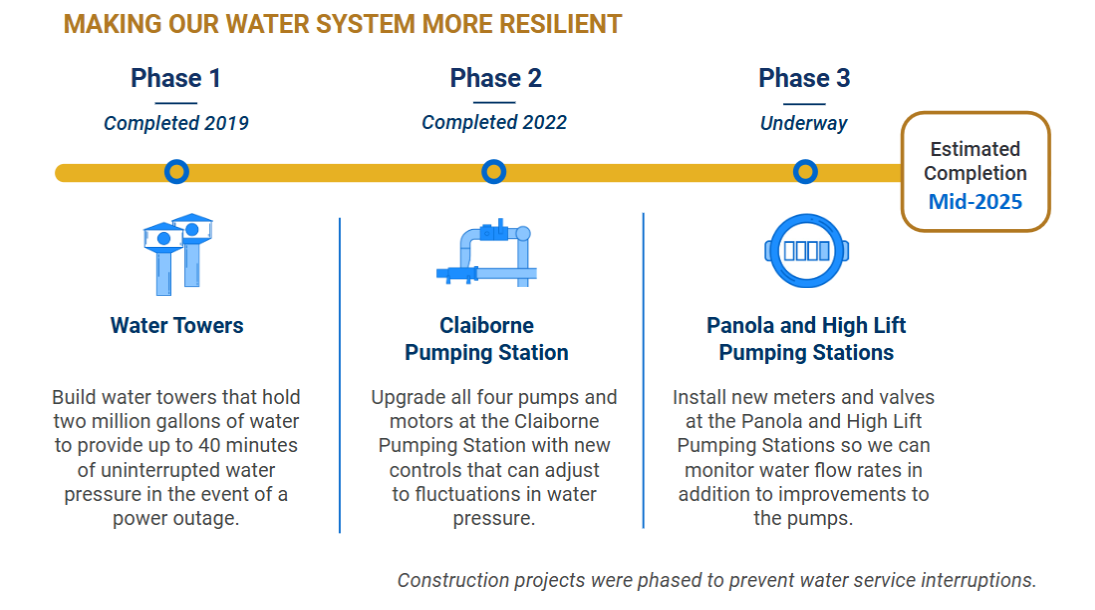Water Hammer Hazard Mitigation Program
It’s hard to miss the twin 200-foot water towers that flank our Carrollton Water Plant. These towers are part of a larger project dedicated to protecting New Orleans’ drinking water. Thanks to funding from FEMA, we have invested in our water system to make it more resilient than it has ever been. The proof? The Eastbank of New Orleans has only experienced one citywide precautionary boil water advisory since 2018, around when the first water tower came online. At this time, the water towers worked as designed and provided 40 minutes of uninterrupted water pressure while we experienced a power outage.
The Water Hammer Hazard Mitigation Program helps reduce damaging pressure surges in water mains. When a valve slams shut (because of a pump failure, for example), water in the main stops quickly or even changes directions, creating a pipe-splitting shockwave that can reverberate backward. This is called “the water hammer effect,” and it can do a lot of damage in a short period of time.

The water towers at the Carrollton Water Treatment Plant campus can hold about two million gallons of water each. In the event of a power loss or another emergency at the treatment plant, the towers can provide uninterrupted water pressure for up to 40 minutes, depending on the size and type of outage. That’s precious time we can use to solve the problem or transfer to another power source. Because we built the towers directly into the water system, all of this happens automatically. No one has to flip a switch to start releasing the water.
Although the water towers are the most visible part of the Water Hammer Hazard Mitigation Program, they represent just one of three phases.
Phase 2, which we completed in early 2023, upgraded all four pumps and motors at the Claiborne Pumping Station with new controls that can adjust to fluctuations in water pressure.
Phase 3, underway as of Spring 2022, involves installing new meters and valves at the Panola and High Lift Drinking Water Pumping Stations so we can monitor water flow rates. We will also make improvements to the pumps.
All three phases of the Water Hammer Hazard Mitigation Program should be complete by mid-2025. We originally expected all three phases to be completed by the end of 2024, however, underground conflicts caused delays pushing the completion date back to mid-2025.